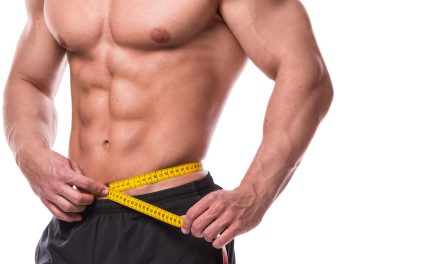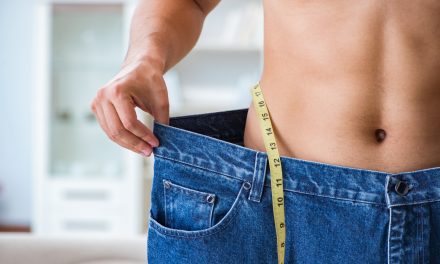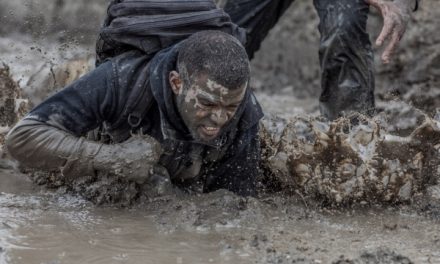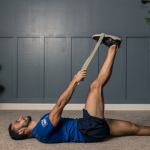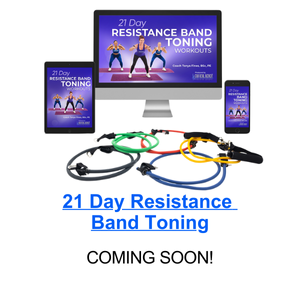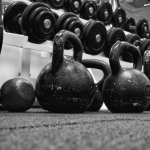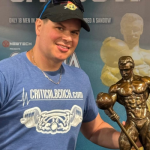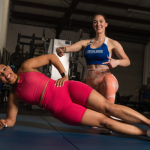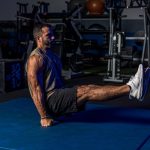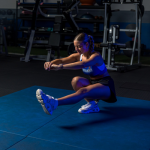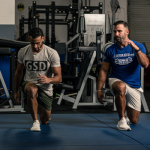Society’s pressures often lead us to neglect our bodies.
You have two choices: stay defeated or take action.
The solution? Bodyweight exercises.
No one will solve your fitness problems for you, and a fit physique must be earned.
Shift your mindset and banish excuses.
Bodyweight training can transform your life, building strength, flexibility, and resilience using your body’s resistance.
Accessible to all, these exercises empower you to redefine your relationship with your body and overcome limitations. Embrace bodyweight exercises to reshape your body and lifestyle.
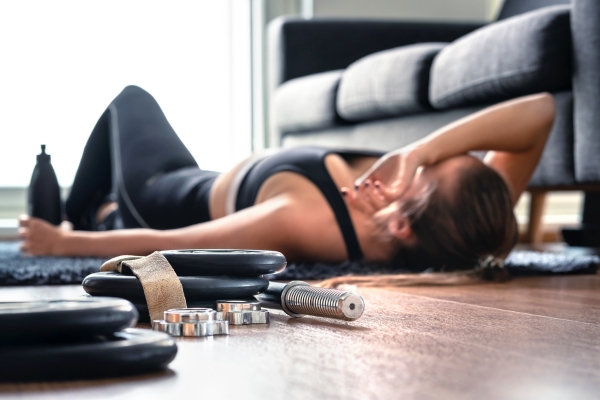
What’s Holding You Back?
Don’t make the mistake of continually rationalizing the different reasons you’re unable to achieve your physical fitness goals.
There are tons of excuses to not do something, and usually these excuses are simply a coping mechanism.
We’ve all been there, weaving a web of justifications for skipping the gym or indulging in unhealthy habits. Whether it’s a busy schedule, lack of motivation, or that enticing comfort zone, the excuses seem endless.
But let’s face it, deep down, we know these are merely roadblocks we’ve constructed ourselves.
The path to a healthier lifestyle is waiting, and it’s time to break free from the cycle of excuses.
The first step is often the hardest, and the only way to overcome these hurdles is to confront them head on. So, let’s look at some common excuses that might be holding you back.
Lack of Time: Many people use a busy schedule as a primary reason for not working out. Balancing work, family, and other commitments can make it challenging to find time for exercise.
Fatigue: Feeling tired after a long day is a common excuse. Some individuals find it difficult to muster the energy to engage in physical activity, especially if they have demanding jobs or responsibilities.
Laziness: Some people simply prefer sedentary activities and find it hard to motivate themselves to get up and move. The allure of lounging on the couch or sitting at the computer can be strong.
Lack of Motivation: A lack of motivation or clear fitness goals can hinder people from incorporating regular exercise into their routine. Without a strong incentive, it’s easy to put off working out.
Gym Intimidation: Some individuals may feel uncomfortable or intimidated by the gym environment. Fear of judgment or insecurity about one’s fitness level can be a barrier to starting a workout routine.
Financial Constraints: Gym memberships, fitness classes, or home exercise equipment can be costly. Financial limitations may prevent some individuals from pursuing workout options they perceive as affordable.
Perceived Ineffectiveness: Some people may doubt the effectiveness of exercise in achieving their desired outcomes, such as weight loss or improved fitness. This skepticism can be a barrier to starting or maintaining a workout routine.
Bodyweight exercises will eliminate ALL of these roadblocks and allow you the opportunity to build the solid, strong, and healthy physique of your dreams.
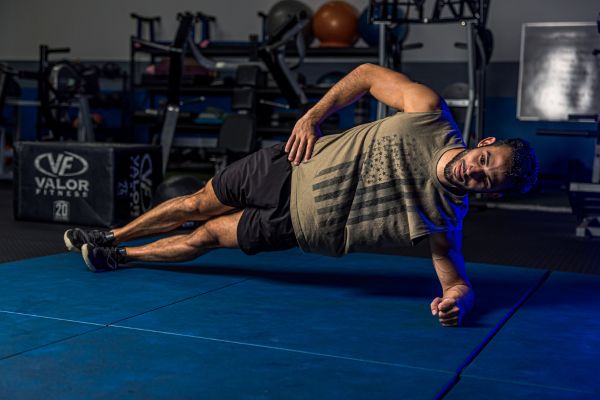
Benefits of Bodyweight Training Workouts
Bodyweight exercises emerge as the cost effective champion of the fitness world.
Here are the benefits of adopting a bodyweight training workout program:
Cost Effectiveness
One of the primary concerns for individuals when embarking on a fitness journey is the financial burden associated with gym memberships, personal trainers, and elaborate home gym setups.
Bodyweight exercises, however, break down this financial barrier, making fitness accessible to all.
The beauty lies in the simplicity, there really is no need for expensive equipment or exorbitant class fees. All you need is the weight of your own body and a bit of open space.
This lack of equipment doesn’t compromise the effectiveness of the workout either.
Bodyweight exercises engage multiple muscle groups simultaneously, promoting functional strength and endurance.
When you don’t need equipment it not only saves you money, but also time. No more waiting for your turn at the crowded gym or investing in bulky machines you never use that gather dust in a corner.
When it comes to bodyweight exercises, the only investment is in your commitment and determination for a healthier lifestyle.
Convenience
Convenience is king.
The flexibility of these workouts allows you to exercise virtually anywhere, eliminating the need for a specific location or time frame.
Whether you’re at home, in a hotel room, or even outdoors, the world becomes your gym. This level of convenience addresses one of the most common hurdles people face when trying to establish a fitness routine which is the time constraints.
Time Efficiency
Speaking of time, another significant advantage to bodyweight exercises is their efficiency.
In a society where time is a precious commodity, the 15 to 30 minutes you allocate for bodyweight exercises can bring remarkable results.
The high intensity and full body engagement in these workouts enable you to burn calories, build strength, and enhance cardiovascular health in a time frame that fits into the busiest of schedules.
No more excuses about not having time for the gym, a quick and effective workout is always within reach.
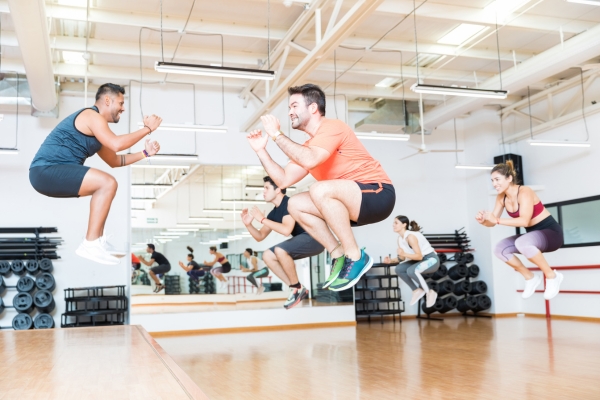
Accessible to All
Almost anyone, regardless of age, fitness level, or physical condition, can incorporate these exercises into their routine.
Whether you’re a seasoned athlete looking for a new challenge or a beginner taking the first steps toward a healthier lifestyle, bodyweight exercises can be tailored to suit your individual needs.
The simplicity of exercises like squats, lunges, push ups, and planks allows individuals to start at their own pace and gradually increase the intensity as they become more comfortable and confident in their abilities.
This adaptability fosters a sense of accomplishment, making fitness a journey rather than an insurmountable challenge.
The inclusivity fosters a sense of community, breaking down barriers and encouraging people from all walks of life to embrace the benefits of regular exercise.
Builds Functional Strength
Bodyweight exercises are the cornerstone of functional strength, emphasizing movements that mimic real life activities.
Unlike isolated machine exercises, which may target specific muscles in isolation, bodyweight exercises engage multiple muscle groups simultaneously, promoting a more balanced functional strength. Classic examples include push ups, squats, and lunges.
Let’s take push ups, for instance. This fundamental bodyweight exercise not only targets the chest, shoulders, and triceps but also engages the core for stability.
Individuals can progress through different variations such as diamond push ups or one arm push ups, they not only build muscle but also develop practical strength that translates into improved daily activities.
Similarly, squats and lunges activate the lower body muscles and enhance the stability of the knee and hip joints, contributing to overall functional fitness.
Optimal Range of Motion
These exercises are dynamic, demanding a range of motion that challenges and enhances flexibility and balance.
Yoga inspired movements like downward dog or the warrior poses are excellent examples of bodyweight exercises that improve flexibility by stretching and lengthening muscles.
These exercises not only enhance the flexibility of major muscle groups but also contribute to joint mobility and joint health.
Balancing on one leg during exercises like single leg squats or incorporating stability exercises like planks challenge the body’s proprioception and coordination.
By integrating balance movements into a routine, individuals develop neuromuscular control, reducing the risk of injuries and improving overall coordination.
Develops True Core Strength
Another standout advantage of bodyweight training is its unparalleled ability to target the core.
Core strength is not just about achieving a six pack, it is about creating a stable and powerful center that supports every movement.
Traditional crunches, combined with more advanced exercises like hanging leg raises or planks, engage the entire core, including the deep stabilizing muscles.
Consider the plank, a common exercise in bodyweight training. Holding a plank position requires the activation of the entire core to maintain a straight line from head to heels.
This exercise not only strengthens the abdominal muscles but also works the obliques and lower back, promoting a well rounded core strength that is essential for posture, balance, and overall functionality.
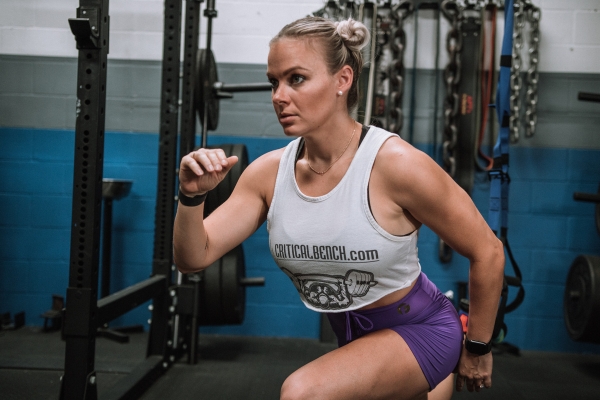
Boost Cardiovascular Fitness
Contrary to the misconception that bodyweight exercises are only for building strength, they are also powerful tools for cardiovascular conditioning.
High intensity bodyweight workouts, such as burpees, mountain climbers, and jumping jacks, elevate the heart rate and improve cardiovascular endurance without the need for elaborate equipment.
Burpees, for example, are a full body exercise that combines strength, agility, and cardiovascular elements.
The explosive nature of the movement challenges the heart and lungs, making it an efficient way to improve overall cardiovascular fitness. As individuals progress, they can modify the intensity and duration of bodyweight exercises to create a cardiovascular workout tailored to their fitness level.
Adaptability
Bodyweight exercises stand out as a timeless and adaptable approach to regaining control of your fitness journey.
Unlike rigid fitness routines that may intimidate beginners or exacerbate existing health conditions, bodyweight exercises offer unparalleled adaptability and scalability.
This adaptability is not just for beginners but is also crucial for reducing the risk of injuries and catering to the unique needs of older populations, who often require a more nuanced approach to physical activity.
Whether you’re a fitness novice or an experienced athlete, bodyweight exercises provide a versatile platform that can be easily customized to match your current abilities.
Easily Scalable
Scalability of bodyweight exercises makes them accessible to virtually everyone, regardless of age or physical condition.
This is particularly crucial when tailoring fitness routines to older populations, who may be more susceptible to injuries or have specific medical conditions that need consideration.
Bodyweight exercises can be modified to accommodate mobility limitations, joint issues, or other health concerns.
For example, traditional squats can be transformed into chair squats to reduce the strain on the knees, and push ups can be modified to wall push ups for individuals with wrist problems.
This adaptability ensures that everyone, regardless of their fitness level or age, can engage in a safe and effective workout routine.
Reduces Injury Risk
Reducing the risk of injuries is a major concern in any fitness program, and bodyweight exercises excel in promoting safer workouts.
Unlike heavy weightlifting or complex machines that can place excessive strain on joints and muscles, bodyweight exercises emphasize functional movements that mimic daily activities.
This natural approach reduces the likelihood of injuries associated with unnatural or forced movements.
Moreover, the ability to control the intensity and range of motion in bodyweight exercises allows individuals to progress at their own pace, mitigating the risk of overexertion and associated injuries.
For older populations, the adaptability of bodyweight exercises becomes even more pivotal. As we age, the importance of maintaining muscle mass, bone density, and overall flexibility cannot be overstated.
Bodyweight exercises offer a gentle yet effective means to achieve these goals.
By tailoring routines to suit individual needs and gradually introducing challenges, seniors can engage in a sustainable fitness routine that not only enhances their physical well being but also contributes to improved balance, coordination, and overall quality of life.
Focuses on Simplicity
Everyone is looking for the easy way, the quick fixes and overnight success stories, the allure of bodyweight brilliance lies in its fundamental simplicity.
It speaks to the core of our being, reminding us that true strength emanates from within.
The energy of a burpee, the power of a push-up, and the core focus of a plank demand nothing but the weight of your own body.
Don’t confuse simplicity with being easy. Instead, see it as there is no other workout program with more sustainability or practicality.
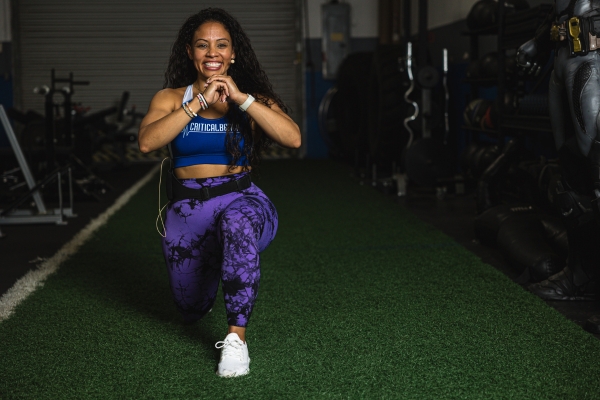
Breaking Down Bodyweight Exercises
The simplest way to break down bodyweight training for the fitness novice is into four main categories that appeal to the majority of the population.
Those categories are Upper Body, Lower Body, Core Strengthening, and Cardiovascular Fitness.
These four groups align with the majority of goals and results that individuals are looking for. It’s important to structure these workouts so the results are seen by YOU.
Ask yourself, what are your goals? What do you want to see? What parts of your body do you want to change?
Everyone’s body is different, and knowing the answer to these questions is going to help you decide which category you should focus on to get the maximum results to keep you motivated.
Upper Body
For men of all ages, building a well defined and muscular upper body is often a paramount fitness goal, and for good reason.
The upper body is a focal point of physical appearance, contributing significantly to a man’s sense of strength, confidence, and overall self image.
Whether striving to gain muscle mass, enhance definition, or simply achieving a muscular physique, upper body bodyweight exercises take center stage in this transformative journey.
Many men find themselves self-conscious about their upper body, making exercises like push-ups and pull-ups an important tool in their fitness arsenal.
These exercises offer unparalleled versatility, allowing individuals to tailor their routines to target specific muscle groups effectively.
Push-ups, for instance, engage the chest, shoulders, triceps, and core, fostering a well rounded upper physique and can be modified to target specific areas.
These are just a few examples of how small modifications can affect the way you pack on muscle…

Standard Push-Up
- Muscles Activated: Chest, shoulders, triceps, and core
- How to Do It: Lower yourself to the floor with hands shoulder-width apart, body straight from head to heels, then push up until your arms are fully extended.
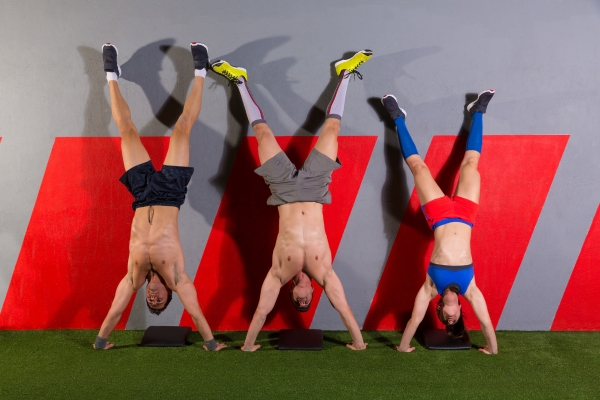
Handstand Push-Ups
- Muscles Activated: Shoulders, triceps, and upper back
- How to Do It: Start in a handstand position against a wall, bend your elbows to lower your head towards the floor, then press back up to the starting position.
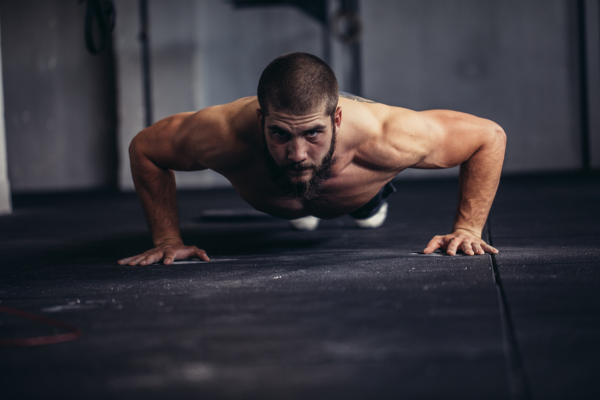
Wide Grip Push-Up
- Muscles Activated: Outer chest, shoulders, and triceps
- Place your hands wider than shoulder-width apart, keep your body straight, lower your chest to the floor, then push back up until your arms are straight.

Decline Push-Up
- Muscles Activated – Upper chest, shoulders, and triceps
- How to Do It: With your feet elevated on a bench or platform and hands on the ground, lower your chest to the floor, then push up to return to the starting position.
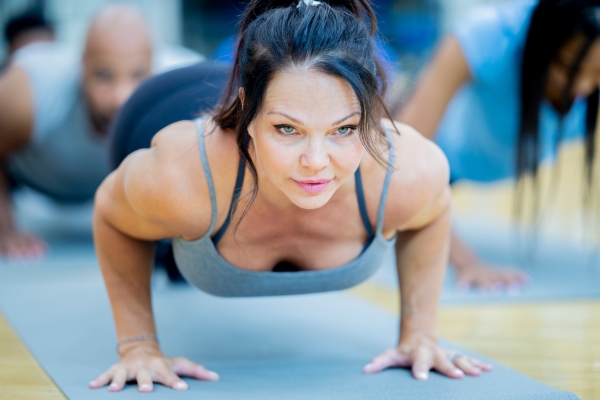
Close Grip Push-Up
- Muscles Activated: Triceps, inner chest, and shoulders
- How to Do It: Position your hands close together under your chest, keep your body straight, lower yourself until your chest touches your hands, then push back up.
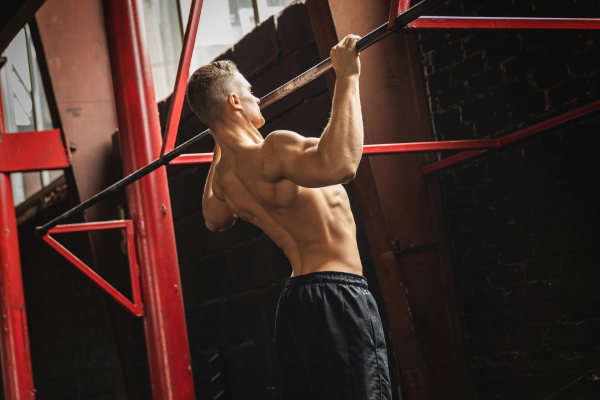
Standard Pull-Up
- Muscles Activated: Latissimus dorsi (lats), biceps, and upper back
- How to Do It: Hang from a bar with an overhand grip, hands shoulder-width apart, pull yourself up until your chin is above the bar, then lower back down.
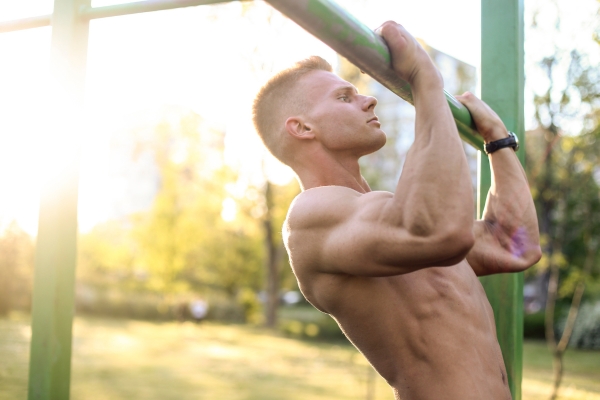
Chin-Up
- Muscles Activated: Biceps, lats, and upper back
- How to Do It: Hang from a bar with an underhand grip, hands shoulder-width apart, pull yourself up until your chin is above the bar, then lower back down.
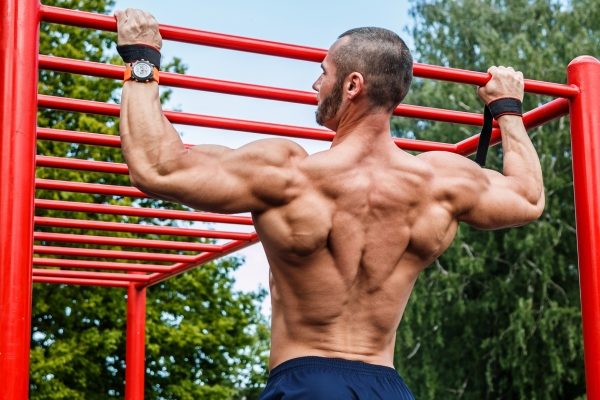
Wide-Grip Pull-Up
- Muscles Activated: Lats, teres major, and upper back
- How to Do It: Hang from a bar with an overhand grip, hands wider than shoulder-width apart, pull yourself up until your chest touches the bar, then lower back down.
Lower Body
In recent society, the lower body has emerged as a central focus for women of all ages, driven in part by the influence of prominent figures like the Kardashians and popular female influencers.
The quest for toned and sculpted legs has become an aspiration, reflecting a desire to emulate the standards set by these cultural icons.
Bodyweight exercises, especially those targeting the lower body, have taken the forefront in achieving these fitness goals.
Women are increasingly turning to exercises like squats and lunges, recognizing them as potent tools for transforming and toning their lower body.
Squats and lunges stand out as offering a variety of benefits.
Not only do they effectively engage major muscle groups such as quadriceps, hamstrings, and glutes, but their modifiable nature ensures suitability for individuals of varying fitness levels.
This versatility enables women to tailor their workouts, whether aiming for subtle toning or a more substantial muscle building approach.
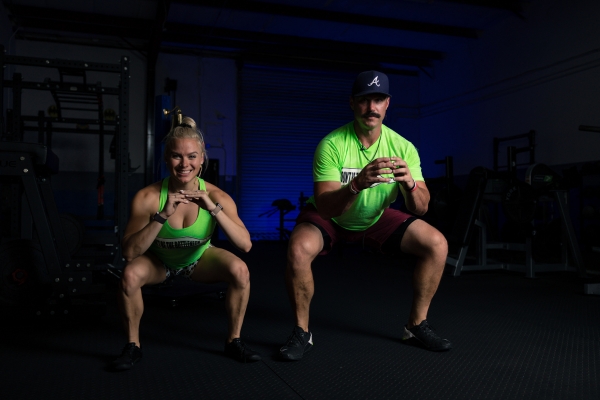
Standard Bodyweight Squat
- Muscles Activated: Quadriceps, hamstrings, glutes, and calves
- How to Do It: Stand with feet shoulder-width apart, lower your hips back and down as if sitting in a chair, keep your chest up, then push through your heels to return to standing.
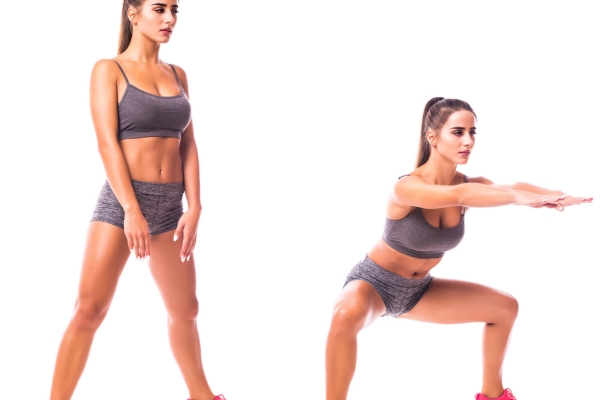
Sumo Squat
- Muscles Activated: Inner thighs, quads, hamstrings, and glutes
- How to Do It: Stand with feet wider than shoulder-width apart, toes pointed out, lower your hips down and back, keeping your chest up, then push through your heels to stand back up.
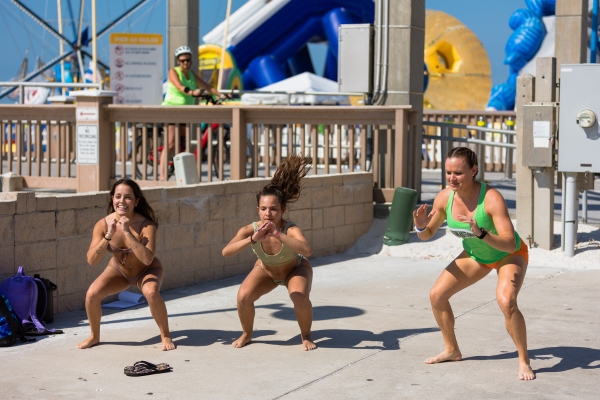
Jump Squat
- Muscles Activated: Explosive movement for overall leg muscles
- How to Do It: Start in a squat position with feet shoulder-width apart, lower your hips down, then explosively jump up, landing softly back into the squat position.
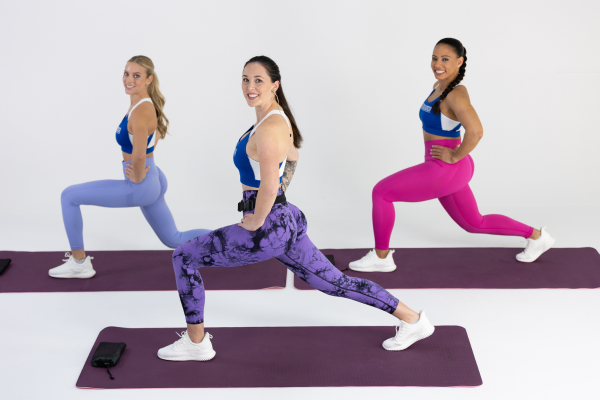
Forward Lunges
- Muscles Activated: Quadriceps, hamstrings, glutes, and calves
- How to Do It: Step forward with one foot, lowering your hips until both knees are bent at 90-degree angles, then push off the front foot to return to the starting position.
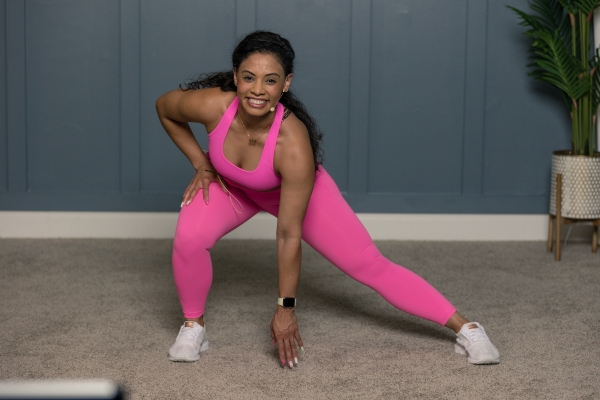
Side Lunges
- Muscles Activated: Inner and outer thighs, glutes, and quadriceps
- How to Do It: Step to the side with one foot, bend the knee of the stepping leg while keeping the other leg straight, lower your hips back and down, then push off to return to standing.
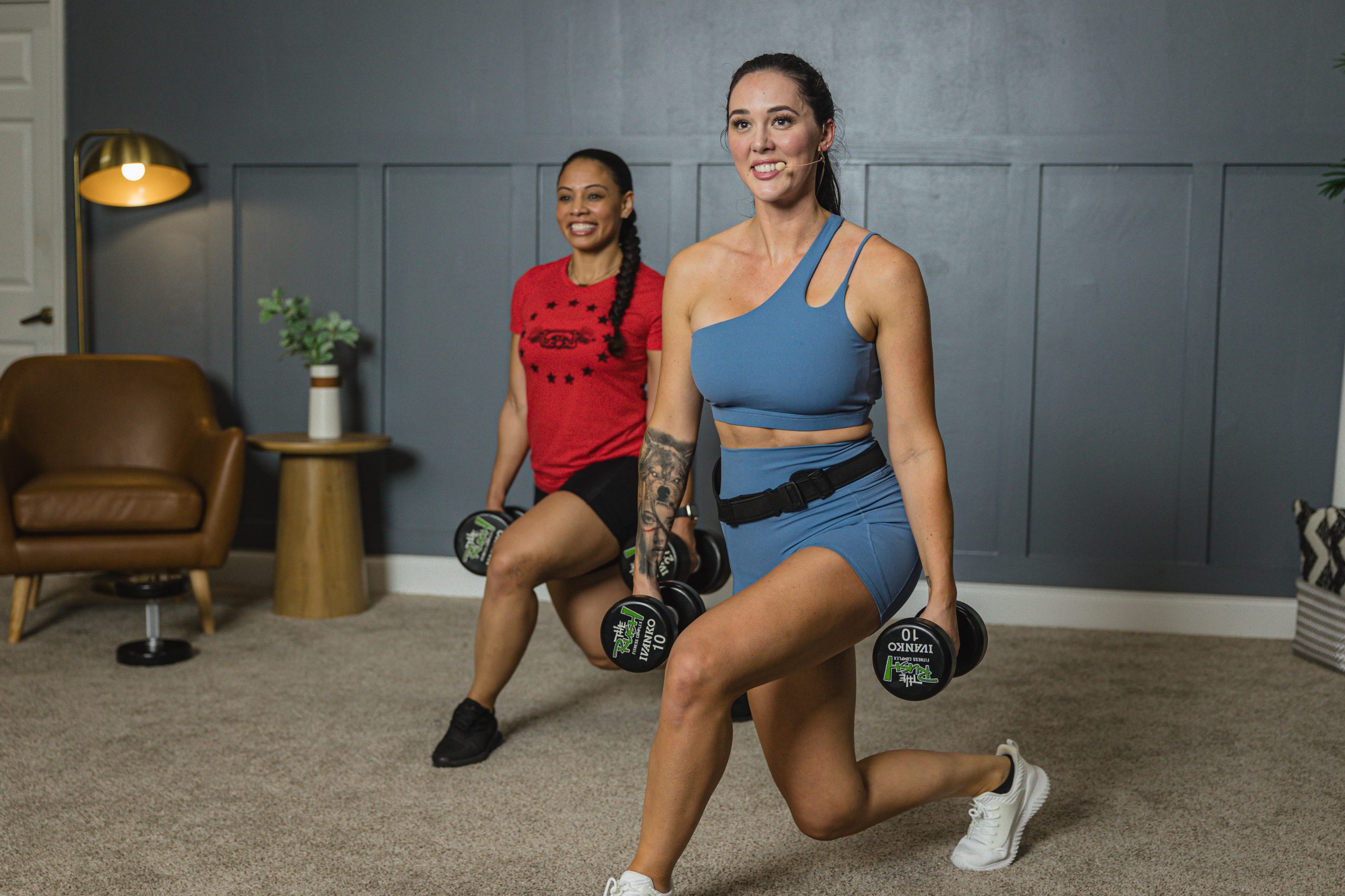
Curtsy Lunges
- Muscles Activated: Glutes, inner thighs, and outer thighs
- How to Do It: Step one leg behind and across the other, bending both knees as if performing a curtsy, lower your hips down, then push back up to the starting position.
Core Strengthening
Unlocking a stronger, toned core is not just about aesthetics, it’s a gateway to overall well being.
These exercises cater to both men and women seeking core strength without the need for equipment.
These exercises like planks, crunches, and leg raises engage the entire core, sculpting abdominal muscles while fortifying the lower back.
For men and women leading sedentary lives, bodyweight exercises serve as an antidote to the strains of prolonged sitting, alleviating back pain and mitigating the risk of injuries.
These go beyond the visual appeal of a chiseled abs. A strong core is foundational for stability, balance, and injury prevention.
These movements will activate deep stabilizing muscles, building resilience against the postural challenges of modern living. Strengthening the core through these exercises not only enhances athletic performance but also promotes better posture, reducing the likelihood of chronic issues.
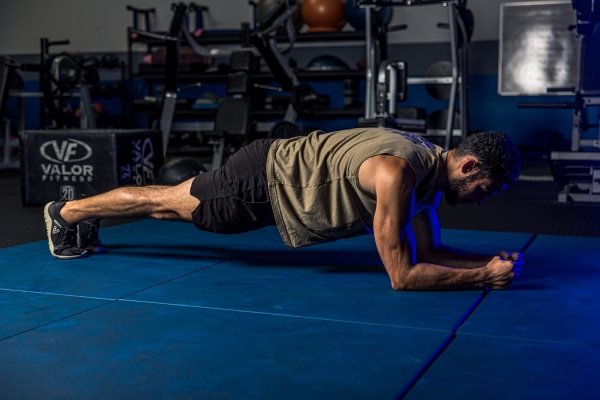
Plank
- Muscles Activated: Rectus abdominis, transverse abdominis, obliques, and lower back
- How to Do It: Position yourself face down, supported by your forearms and toes, keep your body in a straight line from head to heels, and hold this position while engaging your core.
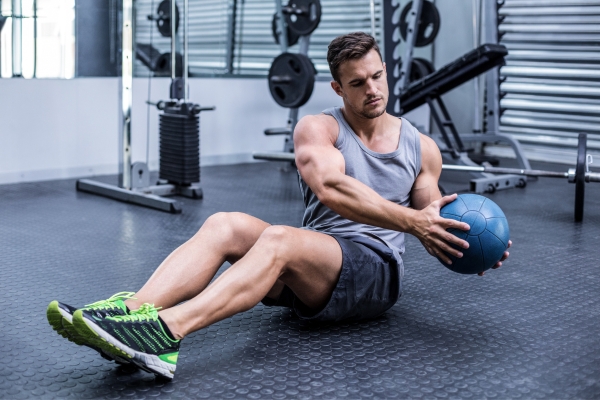
Russian Twists
- Muscles Activated: Obliques, rectus abdominis, and hip flexors
- How to Do It: Sit on the floor with knees bent and feet lifted, lean back slightly, and twist your torso from side to side, touching the floor beside you with each twist.
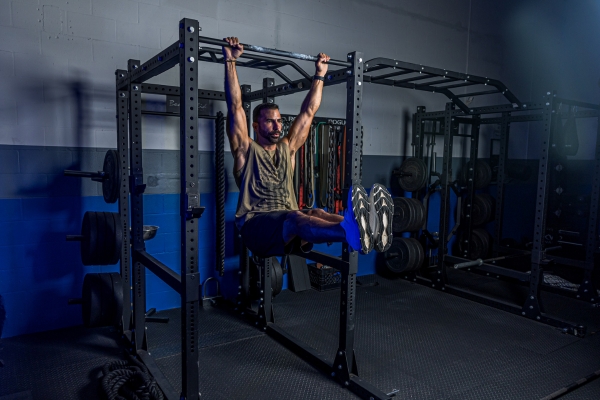
Leg Raises
- Muscles Activated: Lower abs, hip flexors, and lower back
- How to Do It: Lie on your back with legs straight, lift your legs until they are perpendicular to the floor, then slowly lower them back down without touching the ground.
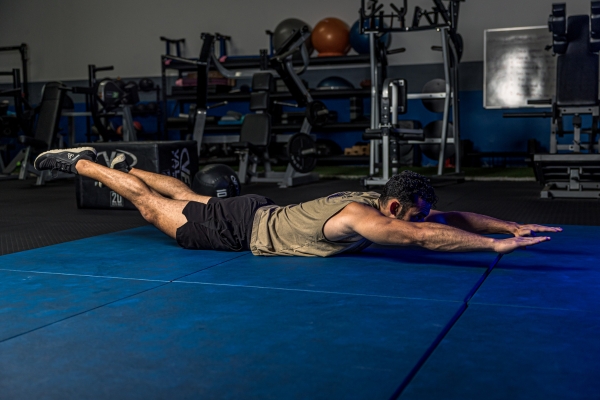
Superman
- Muscles Activated: Lower back, glutes, and erector spinae
- How to Do It: Lie face down with arms extended in front of you, lift your arms, chest, and legs simultaneously off the ground, hold briefly, then lower them back down.
Cardiovascular Fitness
Engaging in cardiovascular bodyweight exercises is necessary for shedding weight, transforming your body and establishing functional muscle.
These dynamic workouts, such as burpees, mountain climbers, and jumping jacks, elevate the heart rate and burn calories while accelerating weight loss.
Weight loss seems to be the biggest advantage to these movements but it also enhances cardiovascular health, promoting increased stamina and endurance.
These exercises engage multiple muscle groups simultaneously, sculpting functional muscles that extend beyond aesthetics.
The emphasis on functional strength in movements like burpees and mountain climbers contributes to improved daily activities, enhancing mobility and stability.
As these exercises require no external equipment, they offer an accessible and cost effective avenue for individuals seeking to transform their bodies and health. Examples of body weight cardiovascular exercises…
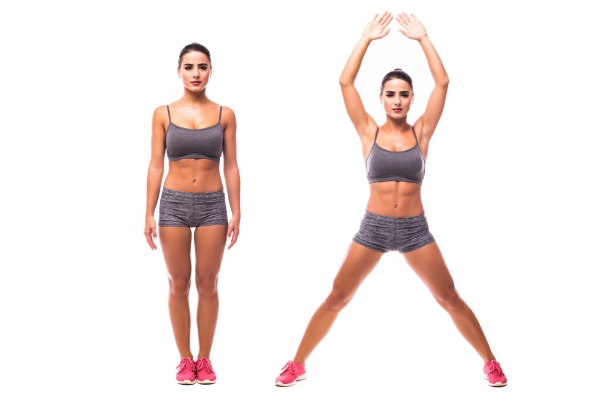
Jumping Jacks
- Muscles Activated: Cardiovascular system, shoulders, and legs
- How to Do It: Start standing with feet together and arms at your sides, jump while spreading your legs and raising your arms overhead, then return to the starting position.
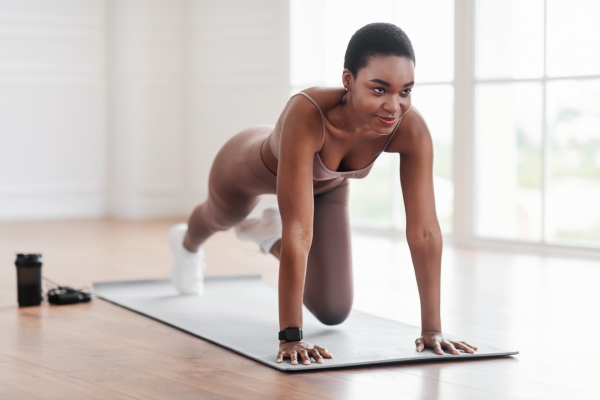
Mountain Climbers
- Muscles Activated: Cardiovascular system, core, shoulders, and legs
- How to Do It: Start in a plank position, bring one knee towards your chest, quickly switch legs in a running motion, keeping your core engaged and hips level.
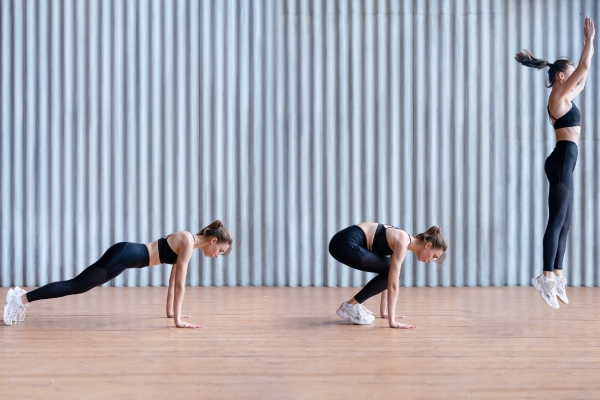
Burpees
- Muscles Activated: Cardiovascular system, full body targeting chest, shoulders, arms, legs, and core
- How to Do It: Start standing, drop into a squat, kick your feet back into a plank position, perform a push-up, jump your feet back to your hands, then explosively jump up with arms raised.
Wrap-Up
As you embrace the battle of You vs Yourself, a massive transformation unfolds.
Beyond the physical gains, a greater respect for yourself grows. It extends beyond the physical aspects of muscle and strength.
It permeates throughout your life, your mindset, and your relationships. The discipline cultivated by the brilliance of bodyweight movements extends into every aspect of existence.
In a society that floods us with images of perfection and external validation, bodyweight brilliance stands as a testament to the power that resides within.
It is a mirror reflecting your commitment, your dedication, and your journey toward the best version of yourself.
In the end, the choice to embark on this transformative journey is yours alone.
Nobody else can perform that push-up, or hold that plank on your behalf.
It is a journey of personal empowerment, where the struggle is not against external adversaries but against the doubts and limitations that reside within.
We urge you to take charge of your own narrative, for in this battle of You vs Yourself, victory is not measured by comparison but by the evolution and resilience of your own mind.

